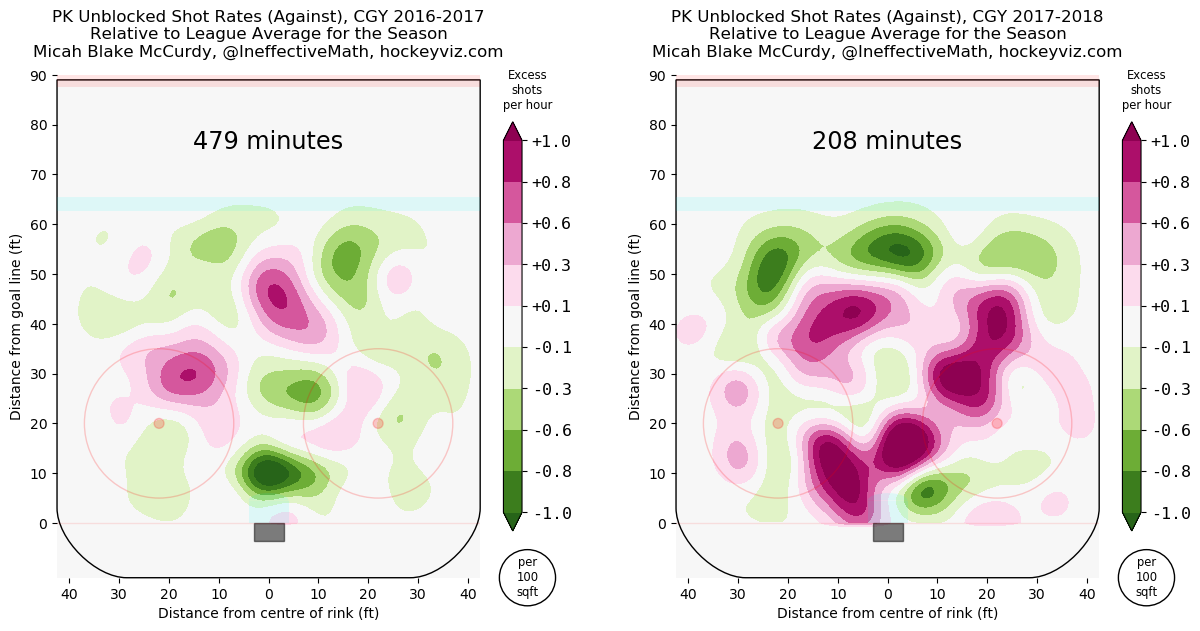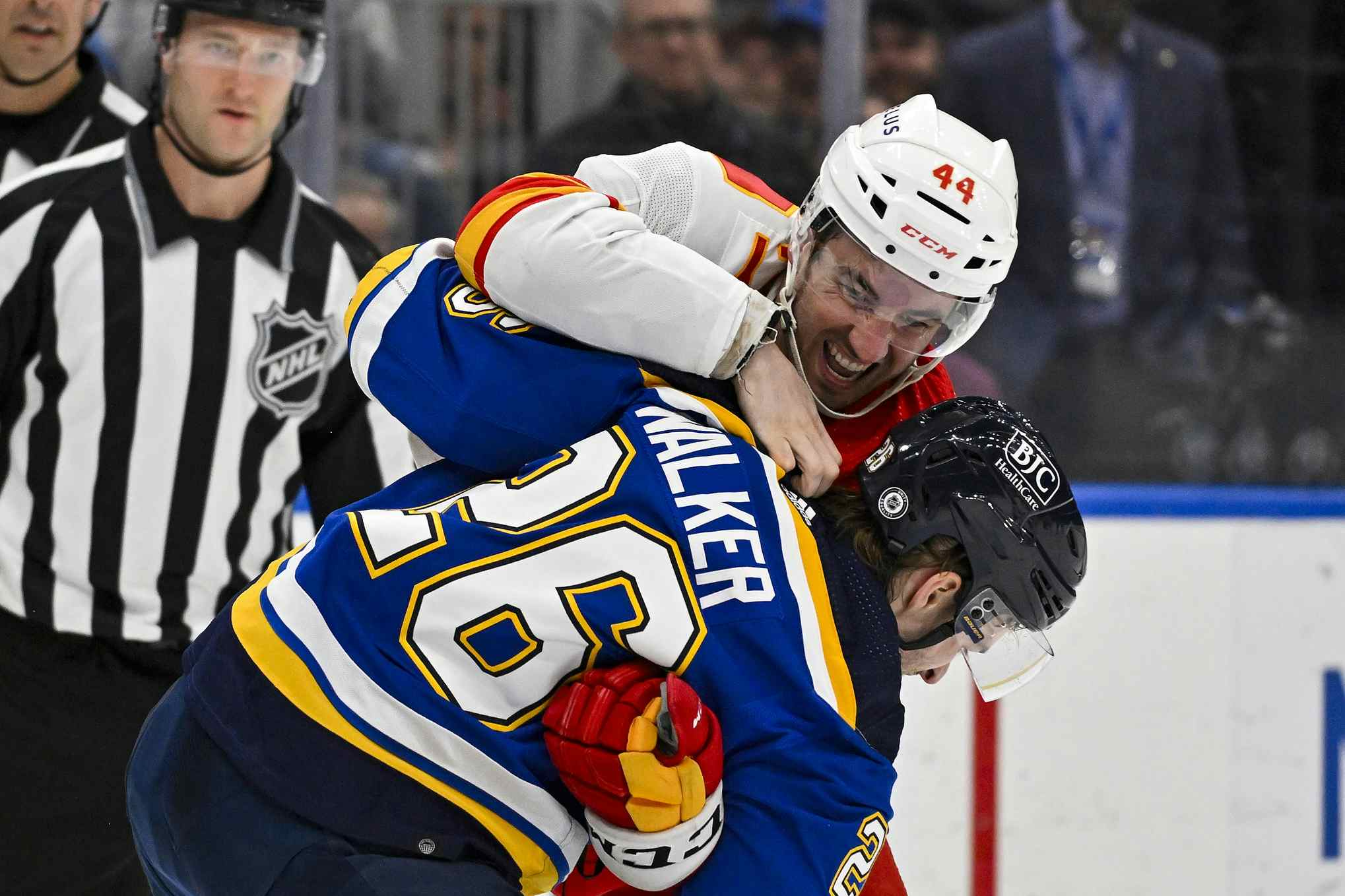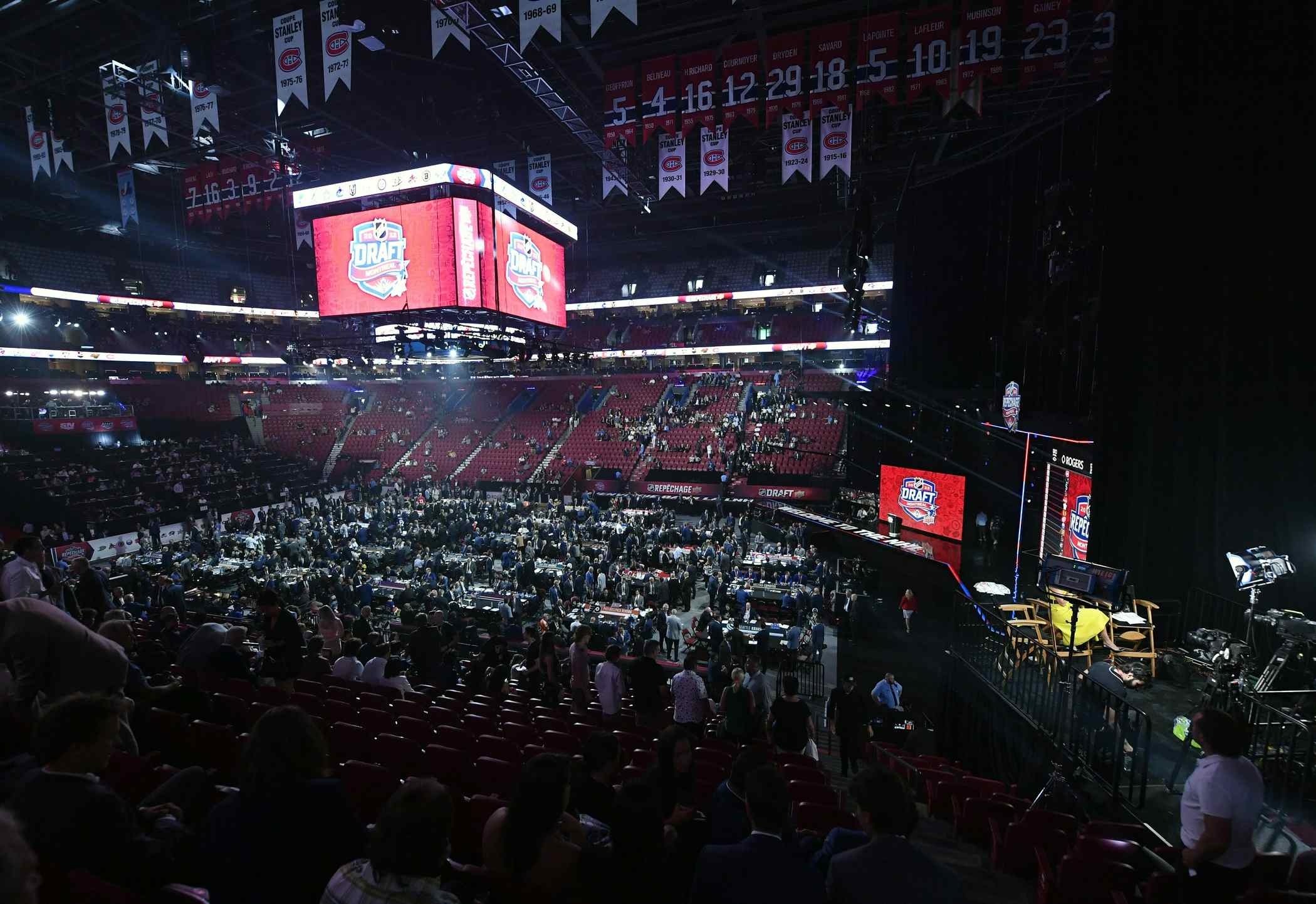Half-season review: The Flames’ penalty kill (Part 2)

By Mike Pfeil
6 years agoAfter yesterday’s foray into the neutral zone, with an emphasis on forechecking formations and zone entry tracking, we’re going to venture into the maws of hell: the defensive zone.
For the Calgary Flames this year their rather quick demise and resurgence has seen more attention focused on their neutral zone woes rather than in their own end.
This year it’s a tale of a team that likely made adjustments due to personnel changes (we’ll touch on one hypothesis a little later) and has spent time catching up to where they expected to be versus where they are now. For this we’ll try to use what we’ve collected to explain inputs contributing to the overall results so far.
If you want a quick crash course on the two formations I’ll draw attention to here, please check out this analysis on the Oct. 13 6-0 loss versus the Ottawa Senators where I break down in detail how each formation works.
Flames 4v5 metrics through 41 GP
| Metric | CA60 | FA60 | SA60 | GA | GA60 | SV% | PenD | TOI 4v5 |
| Result | 97.52 | 78.76 | 58.57 | 27 | 7.79 | 86.7 | +3 | 207.97 |
| First 20 GP | 10th | 24th | 26th | 24th | 25th | 23rd | 17th | 17th |
| Last 21 GP | 6th | 6th | 11th | 9th | 8th | 8th | 10th | 14th |
(data via Corsica)
In virtually every metric, the Flames started the season as an egregiously bad or below average team. This is comparable in many respects to the Hartley-era results when the Flames were abysmally inept on the penalty kill. The good news is that despite the poor start through the first 20 games the tide turned favorably for the Flames through the next 21 games as they were among the better teams in the second quarter.
Now we need to find out if the Flames’ decisions in their own end helped contribute positively to the turnaround or if we need to start looking at other factors.
Defensive zone formation usage
| DZ Formation | Times Used | Usage% |
| Box | 9 | 3.88% |
| Czech Press (Direct Pressure) | 73 | 31.47% |
| Triangle/Wedge+1 (Passive Pressure) | 150 | 64.66% |
Note: Goal tracking by formation is still being redone due to a file error earlier this week. This update will be done at a later date.
At a 2:1 ratio the Flames have elected to use an indirect pressure formation to combat opponents’ power plays. The trend that started through the first 20 games – and highlighted on in previous pieces of analysis – continues to be a staple for the Flames. You’ll notice the dreaded box formation appeared which hasn’t impacted the Flames too much in recent games; the last two examples of it happened in game 38 of the season versus Anaheim, a 2-1 loss.
Now that we’ve established how the Flames select their defensive zone structure and the times utilized, how have they fared when it comes to shots? Let’s look at it in a similar sense to yesterday’s piece:
| DZ Formation | Shots against Per Formation | Fenwick against Per Formation | Corsi against Per Formation |
| Triangle/Wedge+1 | 0.70 | 0.94 | 1.14 |
| Czech Press | 0.41 | 0.67 | 0.86 |
Right away we see that per formation through 41 games, the Flames utilizing a higher pressure solution in their defensive zone does limit more shots. From an on-ice aspect it makes sense: pressing and preventing the power play to get clear lanes for a shot, player movement, leveraging sticks/angles, and forcing them to cycle the puck are elements that make it a hostile environment to play in.
From a theory perspective: You want to create an inhospitable defensive zone while defending which takes advantage of errors, press to force turnovers, etc.; anything to make it difficult to play against.
With regards to the Passive Triangle/Wedge+1, it’s still important to acknowledge that in some circumstances you’ll be forced to employ this approach and that means more attention to activating on triggers to create similar errors or opportunities that you would still find in an aggressive scheme.
So with the 41-game sample established we can move into comparing the first quarter of the season to the second quarter, which yields nothing significant or generally overall impressive:
| DZ Formatiom | Shots-against 1st 20GP | Shots-against Last 21GP | Fenwick-against 1st 20GP | Fenwick-against Last 21GP | Corsi-against 1st 20GP | Corsi-against Last 21GP |
| Triangle/Wedge+1 | 0.72 | 0.68 | 1.01 | 0.85 | 1.18 | 1.08 |
| Czech Press | 0.37 | 0.46 | 0.63 | 0.71 | 0.79 | 0.94 |
The Flames trending a little more positively in the Triangle/Wedge+1 option to the Czech Press isn’t completely unheard of or unexpected. Nothing significant changed in the Flames’ usage across the quarters; the Czech Press remained roughly the same through each quarter (38 in Q1, 35 in Q2) as did the Flames’ continued insistence to the near-static option (82 times used in Q1, 68 in Q2).
There’s a lot of questions to ask about the minor shifts in either direction, but three specific questions that have been overarching continue to come up:
- How much of a factor does forcing dump-ins impact power plays from setting up? Arik Parnass’ zone entry work sheds light on the impact of shots by specific entry type, but there isn’t anything out there on entry type to setup. Parnass did some additional work comparing Eric Tulsky’s work to Corey Sznajder’s tracking to his own (six-team sample) which continues to reinforce controlled entries are preferred.
- How often do power play teams successfully set up post-faceoff wins/losses and transition into formation?
- Is there repeatable success in a particular formation versus another? And if there is, is that particular formation also successful against most widely adopted PP schema?
It’ll be interesting to see how the next quarter of the season plays out and if schedule strength and the opponents the Flames play have any significant weight on tipping the scales for either formation. Saturday’s game versus Winnipeg is the only really daunting power play the Flames will encounter until playing Tampa Bay for the final time this year on Feb. 1.
A budding hypothesis involving Mike Smith
Since the Flames acquired Mike Smith in the offseason there’s been some noticeable shift in how wide at times the triangle/wedge portion of their formation is. If this is a byproduct of what he wants from the players on-ice then this could be a contributing factor to some of the struggles and overtly obvious passiveness.
Alternatively, but in a similar vein, it could be a shift mandated by the coaching staff that they have more confidence in Smith seeing more shots. If that’s the case, then the PKers would activate more on triggers to adhere to the formation’s strengths and results. To entertain this hypothesis a little further let’s use Micah Blake McCurdy’s new PK charts to get an idea of where the Flames are now (45 games played) vs last season:
Overall it’s a noticeable difference, specifically in the high-danger areas, when last season the Flames did a fantastic job shutting teams down there. Part of it came from how Paul Jerrard transitioned the team while shorthanded. Using some additional video we can compare a PK last season vs the Anaheim Ducks to a PK this season vs the Nashville Predators:
Failed to load video.
This is just one example of many that has been caught through tracking and consequently raised eyebrows. Finding out the cause behind it (if it ends up being related to Smith) would be critical as it would be a step forward in determining how personnel dynamics factor into systems and formations.
Suggestions and additional thoughts
Solving the lingering formation issues, specifically in the Passive Triangle/Wedge+1: As touched on previously this is ultimately where changes need to happen. If this is related to the potential changes thanks to Smith in net then the team needs to find a healthy medium. You can still be an effective penalty killer utilizing patient, indirect pressing so long as you don’t go flat and stationary.
Simply stating that the only option is to switch to more pressure-based attacking would be grossly ignorant. We know that the game can change regularly and components can be perfected or adjusted on a game-by-game basis. Accounting for the risk-adverse nature of coaching in this era would lead one to believe that the best and most tangible means to an end here is refining the Passive Triangle/Wedge +1 until it’s back to last season’s standard.
Increase the usage of the Czech Press: The team has the personnel to play this formation more than it has and the value it produces in terms of shot suppression is on display here. Increasing the sample size and its usage might give the Flames an edge down the stretch here for the final half of the season.
If this is a situation where coaches are determined about fatigue in part to averaging five minutes a game through the first half and risk aversion (turnovers, errors, failed exits, etc.) then we need to dig into what can be done to improve the players’ success in that particular formation. Like the need to fine tune the Passive Triangle/Wedge+1 the same could be applied to the Czech Press.
Failed to load video.
What’s next?
Over the next few weeks and months I’ll be transitioning some elements of this project in a different direction that hopefully adds the necessary steps forward to remove noise from this analysis:
- Defensive zone tracking in the Tape to Tape Tracker: Tracking every cross-seam pass against the Flames while in formation will give us additional data in evaluating formations.
- Tracking opposing teams’ power play formations.
- Tracking how a puck is cleared/moved out of the defensive zone: I’ve started work on this already thanks to Prashanth Iyer’s recommendation. Tracking things like “clear + forwards change”, “clear + forward change”, and/or stoppages while in formation might give us, as a community, additional context to on-ice situational management.
However, specifically on what’s next for the Flames, the team was in a precarious situation and presumably is still closely evaluating the results from behind the bench. This isn’t a call for heads to roll because I think the warts that are impacting this specific special teams area can be improved. When Ryan Pike and I take a closer look at units and pairings you’ll see there are solutions already on the team, they just need a chance.
Finally, from a personal perspective, I wanted to use this part of the series as a window into my thought process, data I can provide, and where I see this type of work going. This part of the game doesn’t get enough attention and dichotomy of power play – penalty kill is a fantastic avenue to enjoying and analyzing the game. A well-timed power play against a juggernaut penalty kill can be the perfect microcosm of hockey with a range emotions that swing to either end of the spectrum.
Recent articles from Mike Pfeil






